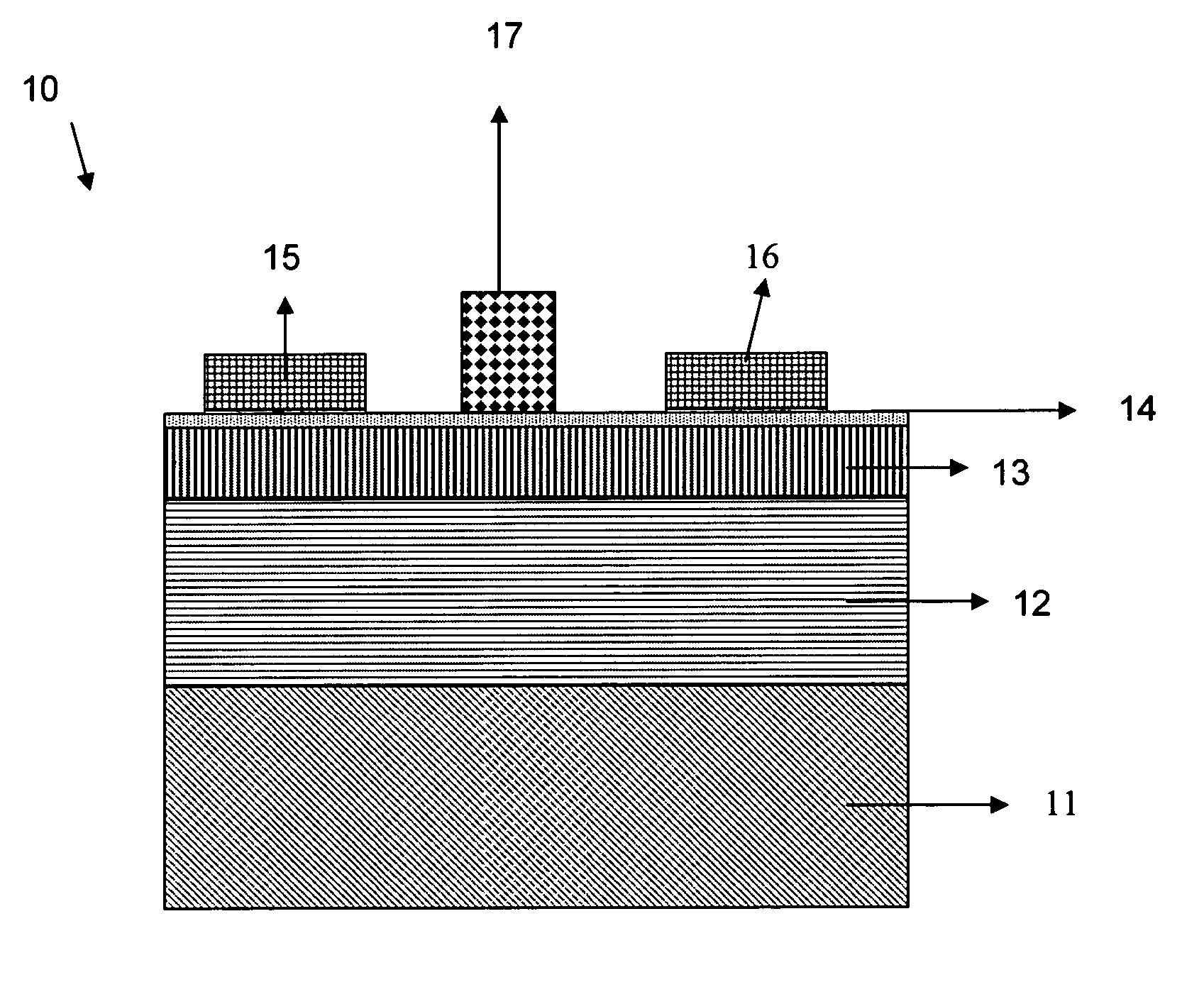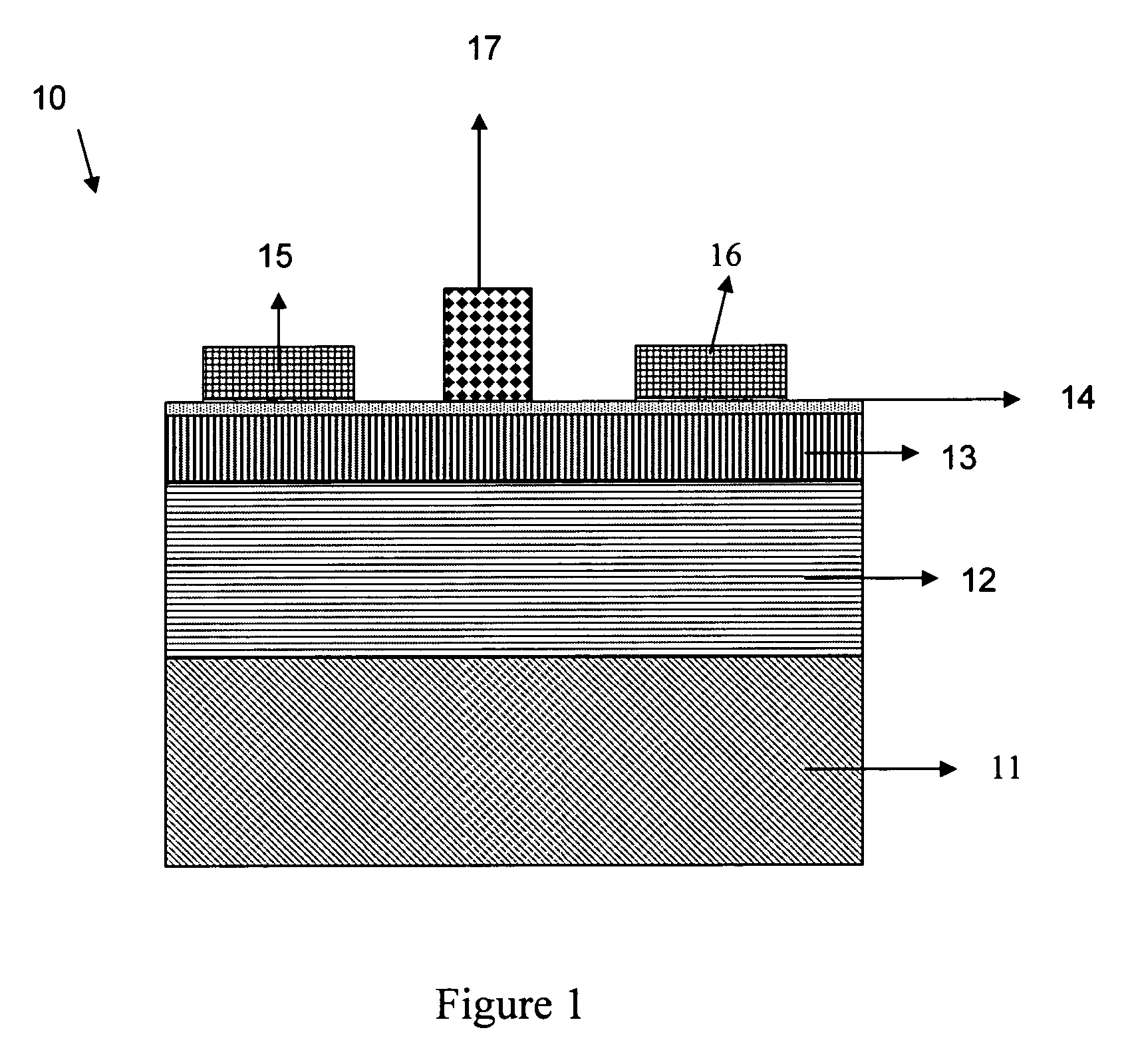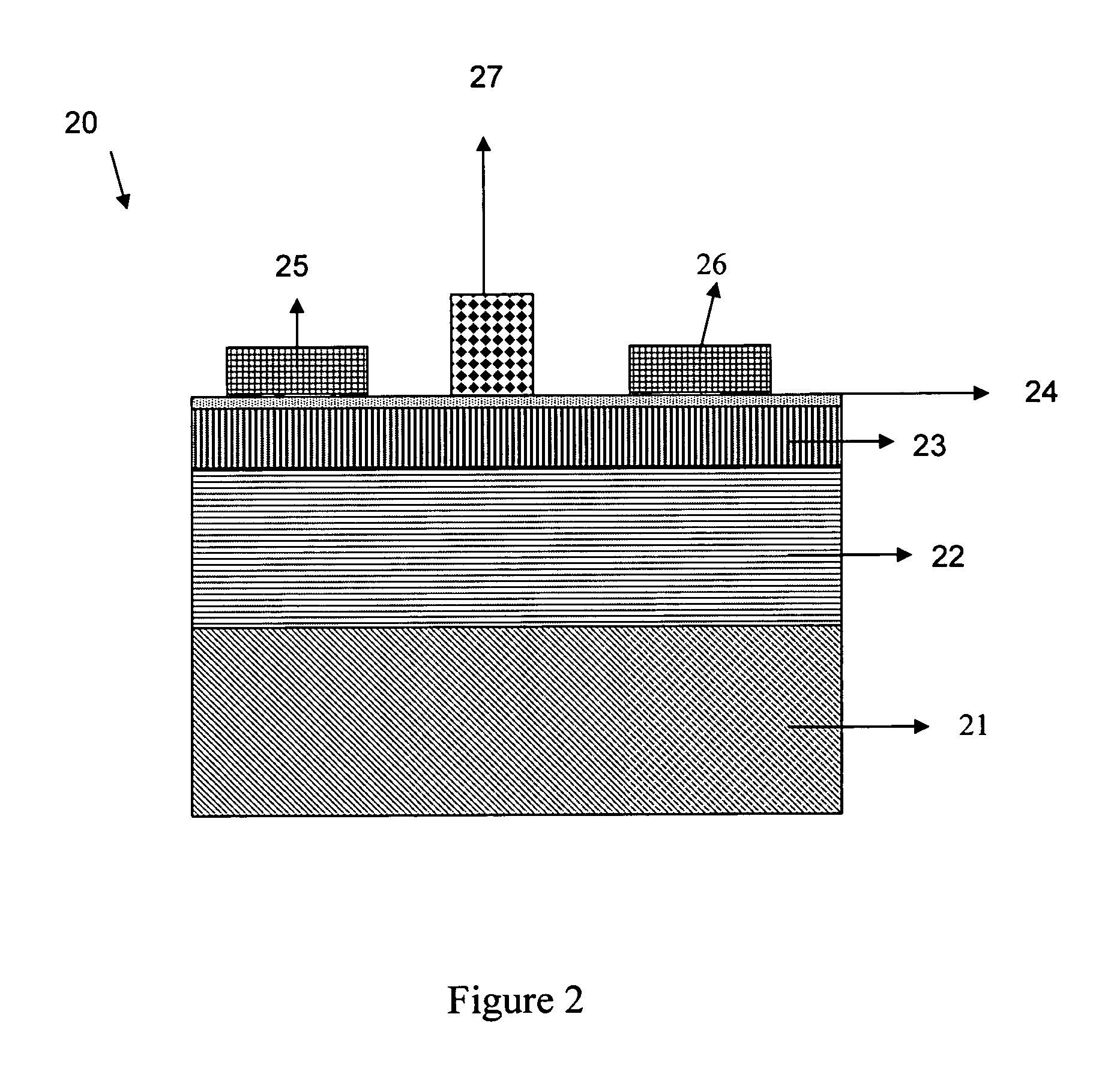AlGaN/GaN high electron mobility transistor devices
- Summary
- Abstract
- Description
- Claims
- Application Information
AI Technical Summary
Benefits of technology
Problems solved by technology
Method used
Image
Examples
example 1
[0175] AlGaN / GaN HEMT structures were grown at low pressure (133.3 mbar (100 Torr)) using Metal Organic Vapor Phase Epitaxy (MOVPE). As starting compounds, trimethyl gallium (TMGa), trimethyl aluminum (TMAl) and ammonia (NH3) were used.
[0176] The metal-organic precursors were transported with hydrogen as carrier gas; the amounts were regulated by means of mass flow controllers and the temperature of the thermostat baths in which the metal organic bubblers are mounted.
[0177] The flow of ammonia was also regulated by means of a mass flow controller and traces of water and oxygen were removed by an in-line filter.
[0178] Additionally, n-type doping of the GaN and (Al,Ga)N layers was achieved by adding silane (SiH4) during growth.
[0179] All gasses were introduced into the reactor via the so-called close-coupled showerhead.
[0180] After degassing the substrate at high temperatures (about 1100° C.), a thin GaN buffer layer was deposited at lower temperature using NH3 and TMGa.
[0181] T...
example 2
[0184] AlGaN / GaN HEMT structures were grown by MOVPE on [0001] sapphire substrates. A Thomas Swan close-coupled showerhead reactor was used with starting compounds trimethylgallium (TMGa), trimethylaluminum (TMAl), ammonia (NH3), and diluted silane (SiH4, 200 ppm in hydrogen). The silane introduction line was modified in such a way that the amount of silane introduced in the reactor was regulated from the required amount for n-type doping of GaN (a few nmol / min up) to about 1 μmol / min.
[0185] After deposition of a thin GaN nucleation layer at low temperature, a 2.6 μm thick GaN layer was grown at 1020° C. with a reactor pressure of 133.3 mbar (100 Torr). Prior to deposition of the AlGaN, a thin AlN spacer layer was grown at 53.33 mbar (40 Torr) to improve mobility in the 2DEG. Depending on samples, the top AlGaN layer was from 22 to 24 nm thick and the Al content was 30% as determined by High-Resolution X-Ray Diffraction measurements. After growth of the AlGaN layer, the reactor was...
PUM
 Login to View More
Login to View More Abstract
Description
Claims
Application Information
 Login to View More
Login to View More - R&D
- Intellectual Property
- Life Sciences
- Materials
- Tech Scout
- Unparalleled Data Quality
- Higher Quality Content
- 60% Fewer Hallucinations
Browse by: Latest US Patents, China's latest patents, Technical Efficacy Thesaurus, Application Domain, Technology Topic, Popular Technical Reports.
© 2025 PatSnap. All rights reserved.Legal|Privacy policy|Modern Slavery Act Transparency Statement|Sitemap|About US| Contact US: help@patsnap.com



